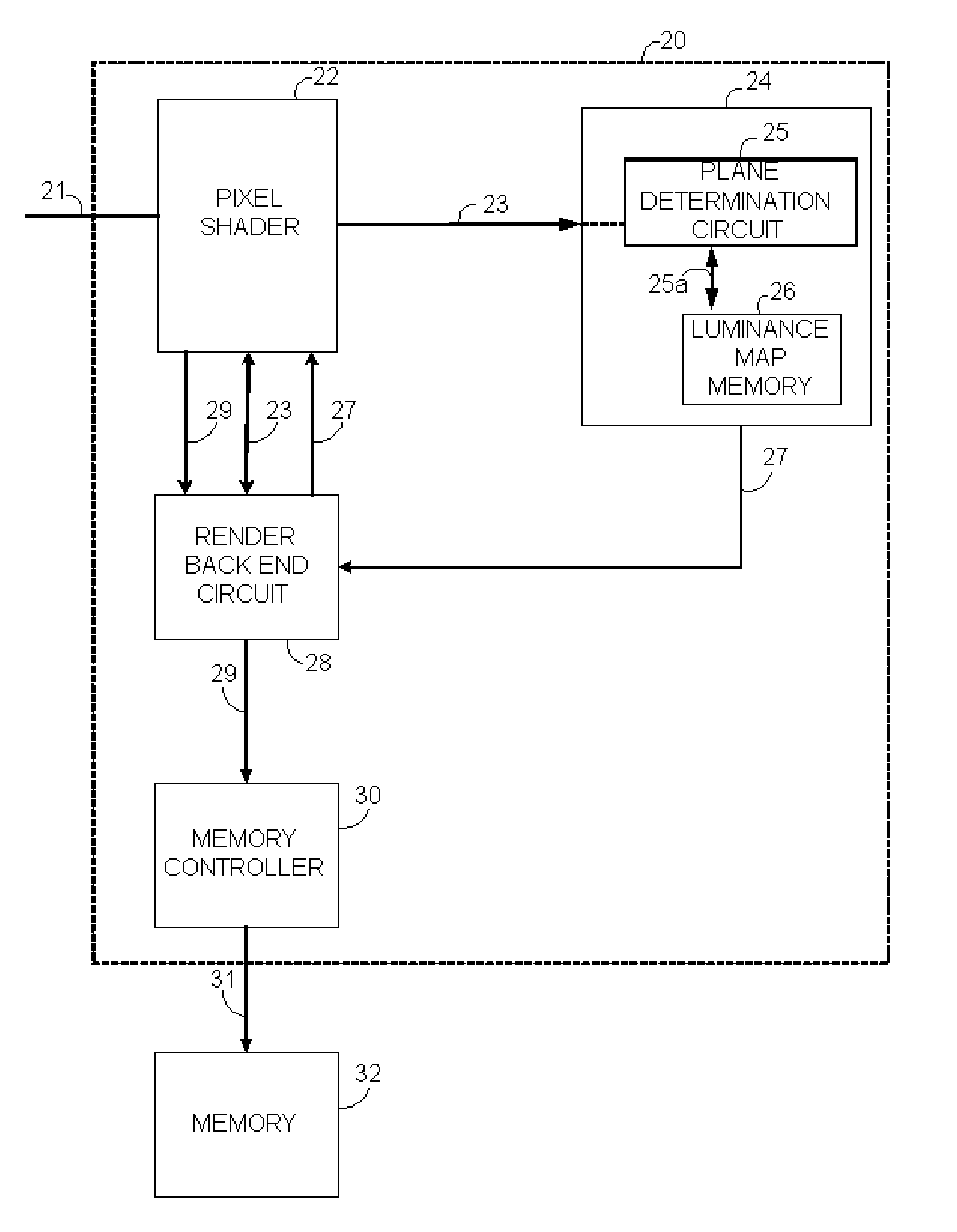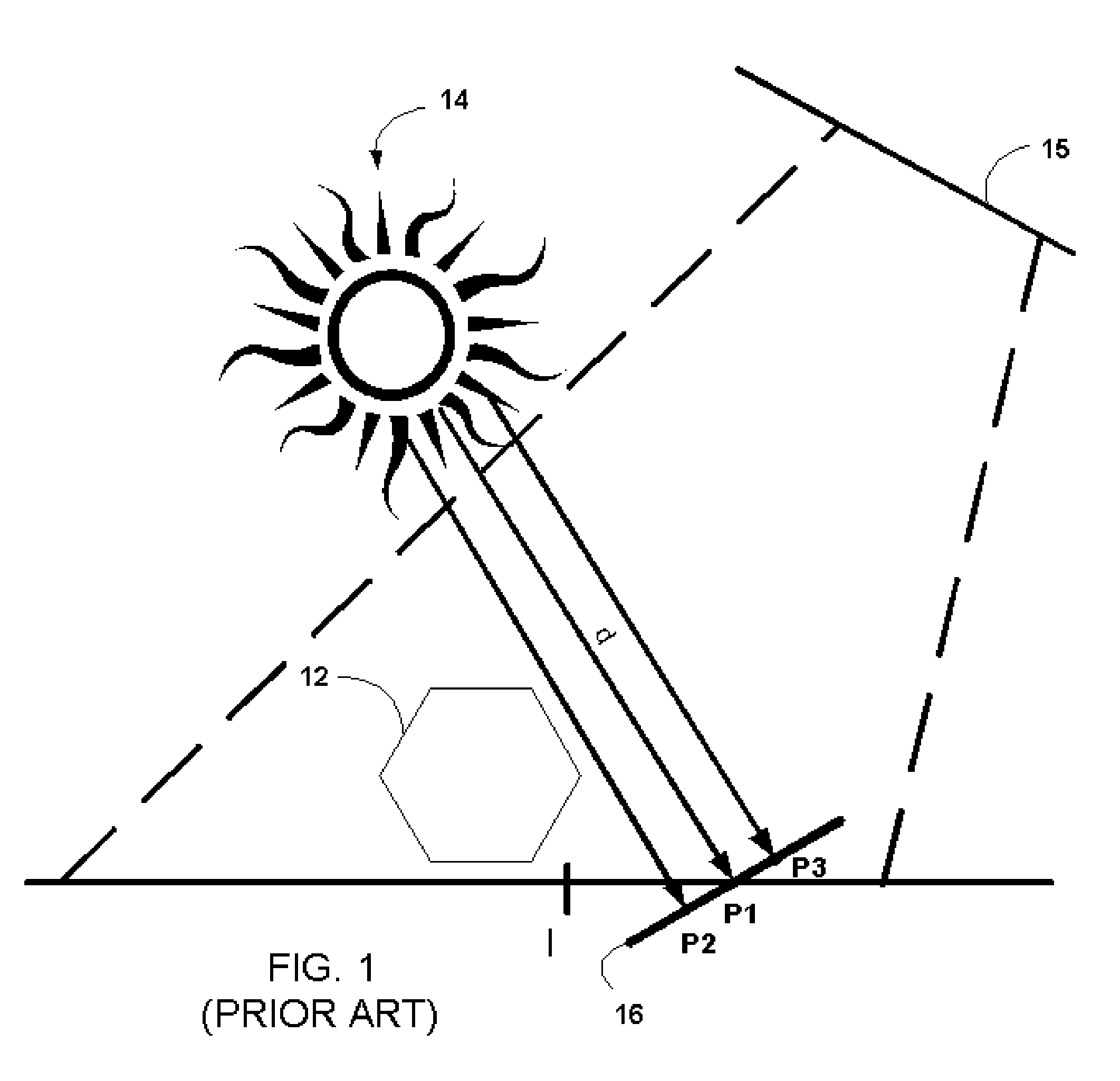System and method for determining illumination of a pixel by shadow planes
a shadow plane and luminance technology, applied in the field of graphics processing circuitry, can solve problems such as aliasing artifacts, luminance value is based, and luminance calculation methods
- Summary
- Abstract
- Description
- Claims
- Application Information
AI Technical Summary
Problems solved by technology
Method used
Image
Examples
Embodiment Construction
[0018] Briefly stated, a graphics processing circuit includes geometry processing logic, which determines the pixels covered by each primitive and a pixel shader operative to provide pixel color information in response to primitive data representing a scene to be rendered. A texture circuit is coupled to the pixel shader and supplies color values to the pixel shader for use in computing the pixel color. In this invention, the texture circuit is also operative to determine the luminance value to be applied to a pixel of interest based on the luminance values of pixels that define a plane including the pixel of interest. A render back end circuit is coupled to the pixel shader to combine pixel colors computed by the pixel shader with pixel values in memory. In this invention, it is also bound to the texture circuit, and is operative to provide the luminance value to the pixel of interest. Note that it is not required for the luminance logic described below to be implemented by placing...
PUM
 Login to View More
Login to View More Abstract
Description
Claims
Application Information
 Login to View More
Login to View More - R&D
- Intellectual Property
- Life Sciences
- Materials
- Tech Scout
- Unparalleled Data Quality
- Higher Quality Content
- 60% Fewer Hallucinations
Browse by: Latest US Patents, China's latest patents, Technical Efficacy Thesaurus, Application Domain, Technology Topic, Popular Technical Reports.
© 2025 PatSnap. All rights reserved.Legal|Privacy policy|Modern Slavery Act Transparency Statement|Sitemap|About US| Contact US: help@patsnap.com



